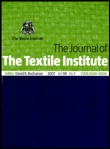
JOURNAL OF THE TEXTILE INSTITUTE
Scope & Guideline
Connecting academia and industry through textile excellence.
Introduction
Aims and Scopes
- Textile Materials and Properties:
Research on the mechanical, thermal, and chemical properties of various textile materials, including natural and synthetic fibers. - Textile Processing and Manufacturing Techniques:
Studies on the methods and technologies used in textile production, including spinning, weaving, dyeing, and finishing. - Smart and Functional Textiles:
Development of textiles with enhanced functionalities, such as moisture management, antibacterial properties, and electronic integration. - Sustainable Textiles:
Research focusing on eco-friendly materials, processes, and recycling methods to minimize the environmental impact of textile production. - Textile Applications in Healthcare:
Exploration of textile applications in medical and healthcare technologies, such as wound dressings and protective clothing. - Textile Design and Aesthetics:
Investigations into the design aspects of textiles, including color, texture, and pattern development. - Textile Testing and Quality Control:
Development of methodologies for testing and ensuring the quality and performance of textile products. - Nanotechnology in Textiles:
Application of nanotechnology in textiles for improved functionality, such as enhanced strength, UV protection, and self-cleaning properties.
Trending and Emerging
- Wearable Technology and E-Textiles:
An increasing trend in research on textiles integrated with electronics and sensors for applications in health monitoring and smart clothing. - Nanotechnology Applications:
Research focusing on the use of nanomaterials to enhance textile properties, such as strength, durability, and functionality, is gaining momentum. - Sustainable and Eco-friendly Textiles:
A growing emphasis on sustainable practices, including the use of biodegradable materials and eco-friendly dyeing processes, reflecting global environmental concerns. - Functionalization of Textiles:
Emerging studies on the functionalization of textiles for specific applications, including antibacterial finishes and UV protection. - Digital Technologies in Textile Production:
Research exploring the use of digital technologies, including AI and machine learning, in optimizing textile production processes and enhancing design capabilities. - Biomedical Textiles:
An increase in studies focused on textiles for medical applications, such as wound healing and surgical textiles. - Textile Recycling and Circular Economy:
Growing research interest in textile recycling technologies and the development of a circular economy within the textile industry.
Declining or Waning
- Traditional Textile Techniques:
Research related to traditional weaving, dyeing, and finishing techniques has decreased as the focus shifts towards innovative and modern methodologies. - Basic Fiber Properties Studies:
Studies primarily focused on basic fiber properties without application to advanced technologies or environmental considerations are becoming less prominent. - Conventional Dyeing Processes:
Research centered on conventional dyeing methods is waning as more sustainable and advanced dyeing technologies gain interest. - Textile Waste Management:
Although still relevant, the emphasis on conventional textile waste management techniques has diminished in favor of more innovative and sustainable approaches.
Similar Journals
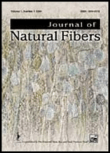
Journal of Natural Fibers
Advancing Knowledge in Natural Fiber InnovationJournal of Natural Fibers is a pioneering open-access academic journal, published by Taylor & Francis Inc, that focuses on the emerging and multidisciplinary field of natural fibers. Established in 2004, the journal aims to advance the understanding and application of natural fibers in various industries, including materials science, textiles, and biocomposites. With an impressive impact factor and ranking in the 74th percentile among materials science journals, it is classified as Q2 in materials science (miscellaneous) as of 2023. The journal encourages innovative research and provides a platform for scientists, researchers, and professionals to share their findings in a rapidly evolving field. Notably, since 2023, it has embraced an open-access model, enhancing the accessibility of cutting-edge research to a broader audience. With contributions from a diverse range of countries and a commitment to high-quality peer review, the Journal of Natural Fibers is essential for those looking to explore the sustainable potentials and technological advancements of natural fibers.

Journal of Fiber Science and Technology
Connecting Ideas, Transforming MaterialsJournal of Fiber Science and Technology is a pivotal scholarly publication dedicated to advancing the field of fiber science, encompassing the study of fibers and textiles across various applications. Published by SOC FIBER SCIENCE TECHNOLOGY in Japan, this journal has been a significant forum for innovative research since its inception, with coverage from as early as 1946. Despite its current categorization in the Q4 quartile across multiple disciplines including Chemical Engineering, Industrial and Manufacturing Engineering, and Materials Science, the journal provides a valuable platform for the dissemination of knowledge, fostering collaboration among researchers, professionals, and students alike. The journal promotes an interactive learning environment, welcoming contributions that underscore the latest advancements in fiber materials, processing technologies, and their broad industrial implications. By bridging theory and practical application, the Journal of Fiber Science and Technology is essential in shaping the future of fiber technology.
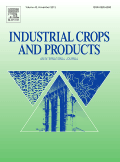
INDUSTRIAL CROPS AND PRODUCTS
Exploring Innovative Solutions in Industrial Crop ResearchINDUSTRIAL CROPS AND PRODUCTS is a premier journal dedicated to the field of agronomy and crop science, published by Elsevier. With an impressive impact factor that places it in the Q1 quartile for its subject category, this journal ranks among the top 29 out of 406 in Agricultural and Biological Sciences, demonstrating its significance and influence within the academic community. Since its inception in 1992, it has been committed to disseminating high-quality research that advances the understanding of industrial crops and their applications. The journal is an excellent resource for researchers, professionals, and students who are keen to explore novel findings, methodologies, and approaches in crop diversification and product development. Although it does not currently offer open access options, it maintains a rigorous peer-review process to ensure that only the most impactful research is published. As it continues to grow and evolve through to 2024, INDUSTRIAL CROPS AND PRODUCTS remains a crucial platform for those looking to make significant contributions to the field.

FIBRES & TEXTILES IN EASTERN EUROPE
Connecting Ideas, Inspiring Solutions in Textile EngineeringFIBRES & TEXTILES IN EASTERN EUROPE, published by the Lukasiewicz Research Network - Lodz Institute of Technology, is a prominent academic journal dedicated to advancing knowledge in the fields of materials science, engineering, and environmental research within the textile industries of Eastern Europe. Since its inception in 1993, this journal has become a vital resource for researchers, professionals, and students alike, focusing on the latest innovations and trends in fiber and textile technology. With an impressive classification of Q3 in several categories, including Business and International Management, Environmental Science, and Industrial Manufacturing Engineering, it aims to bridge the gap between research and practical application. Although it is an open-access journal, readers can easily access valuable insights and findings that are crucial for both academic and industrial stakeholders. As global sustainability and material efficiency become increasingly pressing issues, FIBRES & TEXTILES IN EASTERN EUROPE plays an essential role in disseminating research that addresses these challenges while promoting collaboration across diverse disciplines.
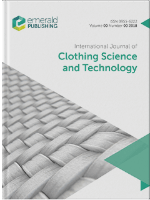
International Journal of Clothing Science and Technology
Empowering Progress in Textiles and Technology.International Journal of Clothing Science and Technology, published by Emerald Group Publishing Ltd, is a leading academic journal dedicated to advancing the field of clothing science and technology. With a commitment to high-quality research since its inception in 1989, this journal effectively bridges the gap between innovation and application within the realms of textiles, fashion, and related materials science. The journal holds a respectable Q3 ranking across several categories, including Business, Management and Accounting (miscellaneous) and Materials Science, emphasizing its relevance in both industry and academia. Although it is not Open Access, the journal nonetheless provides critical insights and findings that are essential for researchers, professionals, and students aiming to navigate the complex world of clothing technology. From sustainable practices to new fabric technologies, the International Journal of Clothing Science and Technology remains a vital resource, equipping its readers with the latest knowledge to drive progress in this dynamic field.

Arts
Illuminating Cultural Narratives Through Scholarly InquiryArts, published by MDPI, is an esteemed open-access journal dedicated to the interdisciplinary field of arts, encompassing visual arts, performance, literature, and related studies. Since its inception in 2012, Arts has provided a platform for researchers and practitioners to disseminate innovative ideas and critical research that enrich our understanding of cultural expressions and artistic practices. With its E-ISSN 2076-0752, the journal ensures wide accessibility and dissemination of knowledge, facilitating an inclusive dialogue among artists, scholars, and students from diverse backgrounds. The journal's commitment to quality and relevance in the humanities is reflected in its robust editorial standards and peer-review process, making it a valuable resource for those engaged in artistic research. Arts serves as an essential space for academics to explore contemporary challenges and advancements in the arts, highlighting its integral role in societal discourse and cultural development.

Industria Textila
Connecting Theory and Practice in the World of TextilesIndustria Textila is a prominent academic journal dedicated to advancing knowledge in the fields of textile science, engineering, and related disciplines. Published by the Institutul Național de Cercetare-Dezvoltare Textile Pielarie din București, Romania, this journal has been a key player in the textile research community since its inception in 1994, with a converged publication timeline extending to 2024. With its significant contributions, Industria Textila currently holds a Q3 ranking in various categories, including Business, Management and Accounting, Environmental Science, and Materials Science. Despite its more accessible open access status, researchers are drawn to its rigorous scientific standards and interdisciplinary approach, addressing critical issues in textiles such as sustainability and innovation. The journal's commitment to enhancing understanding of interrelated sectors makes it an invaluable resource for academics, professionals, and students aiming to contribute to the evolving landscape of textile research. With a focus on both applied and theoretical aspects, Industria Textila seeks to bridge gaps between research findings and practical applications, thereby inspiring advancements in the field.
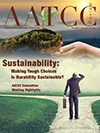
AATCC REVIEW
Innovating textile solutions for contemporary challenges.AATCC REVIEW is a distinguished journal published by the American Association of Textile Chemists and Colorists (AATCC), focusing on the interdisciplinary fields of textile chemistry, material sciences, and engineering. With an ISSN of 1532-8813, this journal serves as a vital platform for researchers and professionals engaged in the latest advancements and innovative practices within the textile industry. Despite its Q4 rankings in the 2023 category quartiles for Chemical Engineering, Chemistry, and Materials Science, AATCC REVIEW remains committed to enhancing its academic contributions and bolstering knowledge-sharing within its community. The journal, which has transitioned to a view title change in open access, enables a wider dissemination of research findings, thus supporting the global textile community in addressing contemporary challenges. With a coverage period from 2001 to 2020 and its U.S. base situated in Research Triangle Park, North Carolina, the journal plays a significant role in bridging the gap between academia and industry, making it an essential resource for students, researchers, and industry professionals alike.

Pigment & Resin Technology
Exploring the Intersection of Pigments and ResinsPigment & Resin Technology is an esteemed journal published by Emerald Group Publishing Ltd, focusing on the interdisciplinary fields of materials chemistry and coatings science. With a history spanning from 1972 to 2024, the journal serves as a vital platform for disseminating innovative research and developments concerning pigments, resins, and related materials technologies. Holding a respectable position in the Q3 category for both Materials Chemistry and Surfaces, Coatings, and Films as of 2023, it ranks within the 40th percentile among its peers, underscoring its relevance and impact within these domains. Although it does not currently offer open access, the journal remains a key resource for researchers, professionals, and students aiming to stay abreast of cutting-edge findings and practical applications in materials science. As such, Pigment & Resin Technology is essential reading for those engaged in the innovation and application of advanced materials in various industries.

FIBERS AND POLYMERS
Advancing the Science of Materials Through InnovationFIBERS AND POLYMERS is a prestigious scholarly journal published by the Korean Fiber Society, specializing in the fields of Chemical Engineering, Chemistry, and Polymer Science. Since its inception in 2000, the journal has provided a dynamic platform for researchers and professionals to disseminate cutting-edge findings and innovative methodologies related to fibers, polymers, and their diverse applications. With its Q2 category ranking across multiple disciplines in 2023 and a commendable standing in Scopus rankings—ranking #183 in General Chemistry and #127 in General Chemical Engineering—it is well-regarded within the academic community. The journal’s commitment to quality research is further underscored by its comprehensive coverage of technological advancements and theoretical developments relevant to both industry and academia. Access to published articles may vary, and authors are encouraged to submit original research to contribute to this evolving field. Join the community shaping the future of materials science through FIBERS AND POLYMERS.